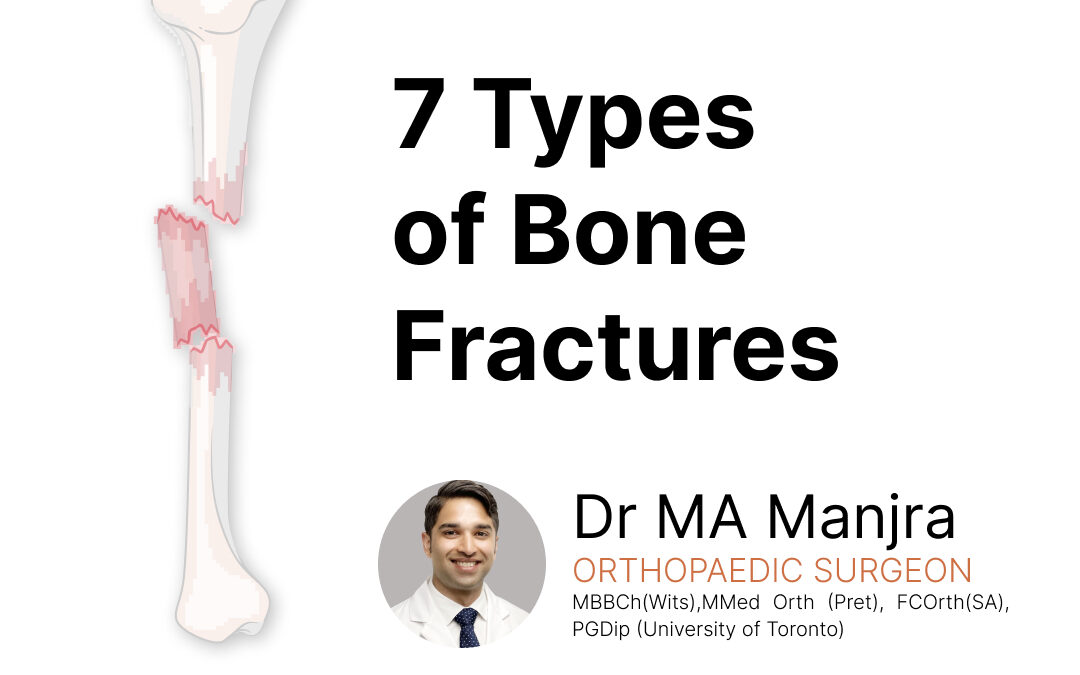Bone fractures, though painful and often debilitating, are a prevalent occurrence in both everyday life. Whether resulting from a fall, a sports injury, or a sudden impact, fractures can manifest in diverse forms, each presenting its unique challenges and treatment protocols.
Understanding the nuances of these fractures is crucial not only for medical professionals but also for individuals seeking to grasp the severity and implications of such injuries.
In this guide, we delve into bone fractures, shedding light on seven of the most prevalent types. From the classic hairline fracture to the more complex comminuted fracture, each variation offers insight into the nature of bone injuries. We aim to empower readers understand bone fractures, so they can prevent them and know how to manage them effectively
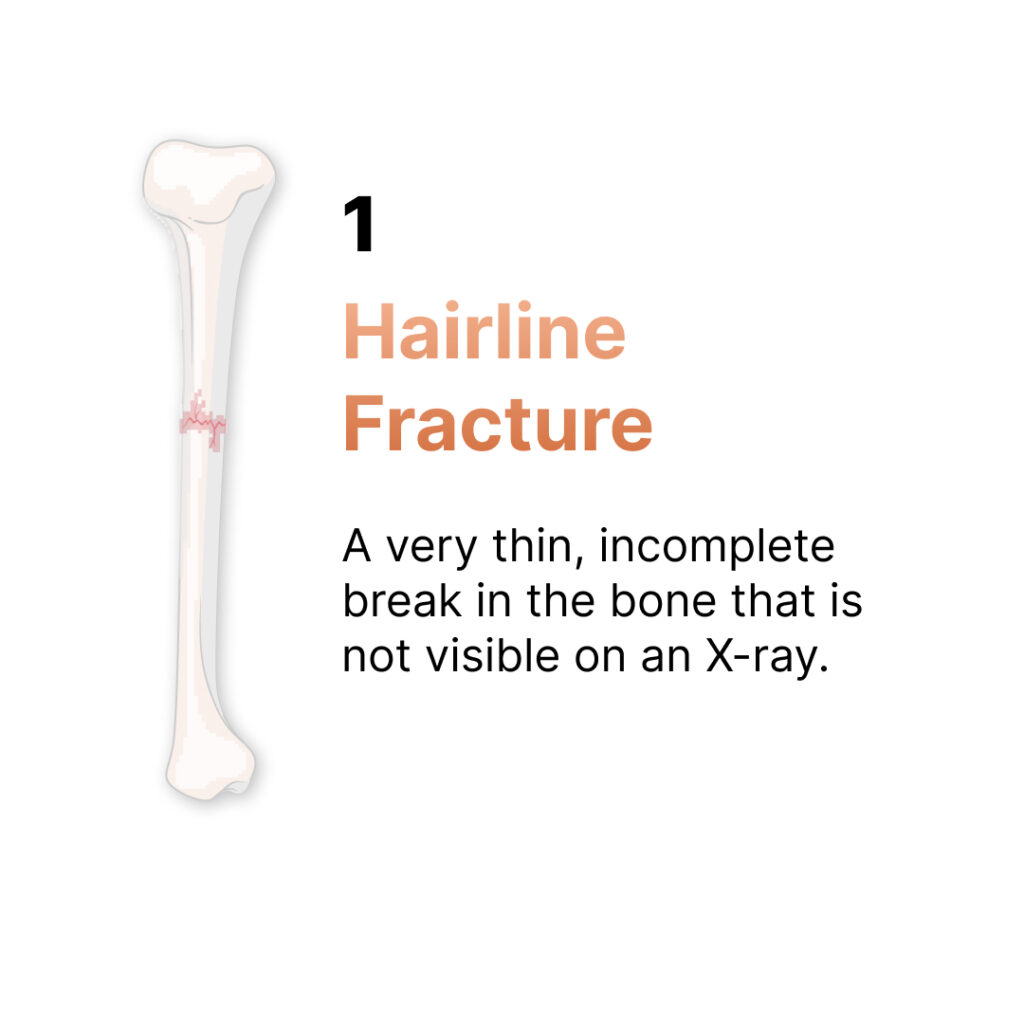
Hairline Bone Fractures
A hairline fracture also known as a “crack” or “stress” fracture and is a very thin break in the bone that is not visible on an X-ray. These fractures are often the result of repetitive stress or overuse, and they can occur in any bone. Symptoms may include pain, swelling, and tenderness. Treatment involves rest, immobilization.
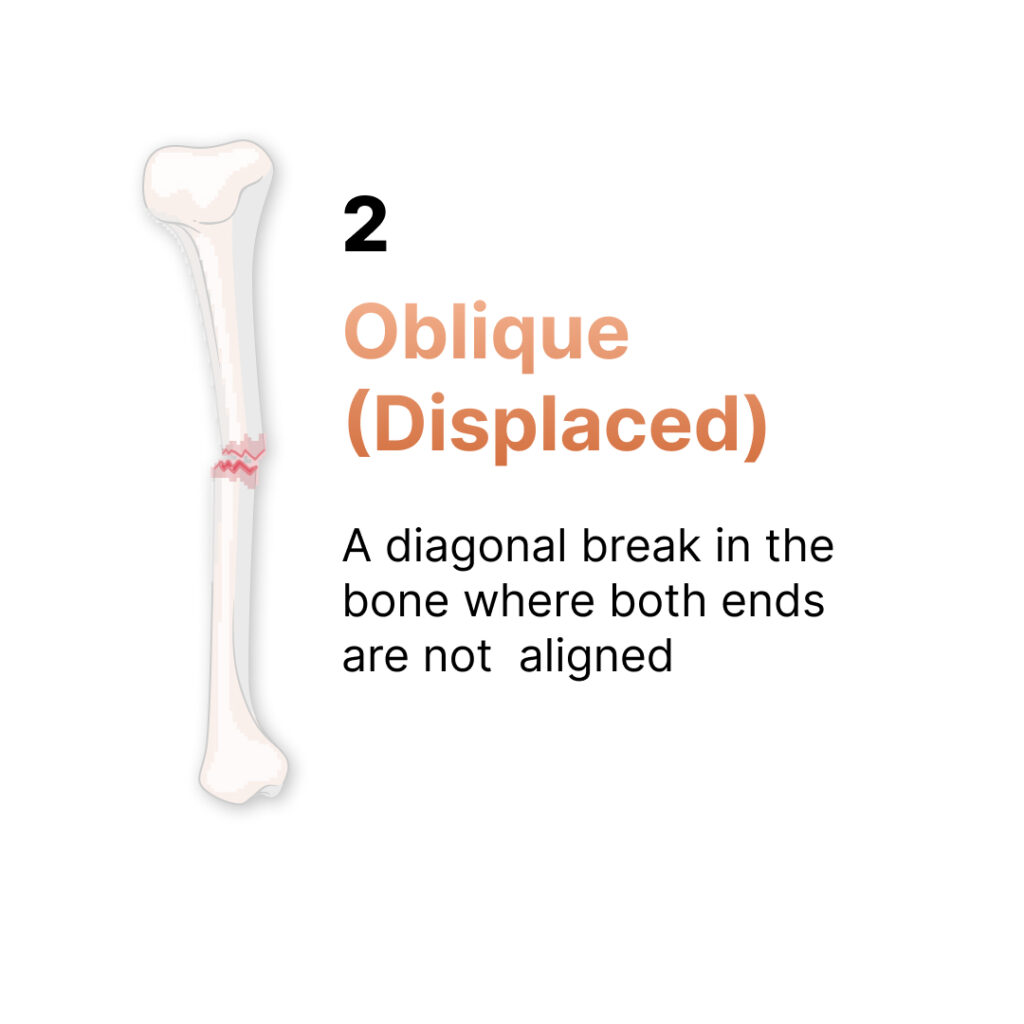
Displaced Oblique Bone Fracture
A displaced oblique fracture is a diagonal break in the bone where the ends are NOT aligned. Treatment for a displaced oblique fracture may include casting or traction. Surgery to realign the bone involves stabilizing it with screws, pins, or plates.
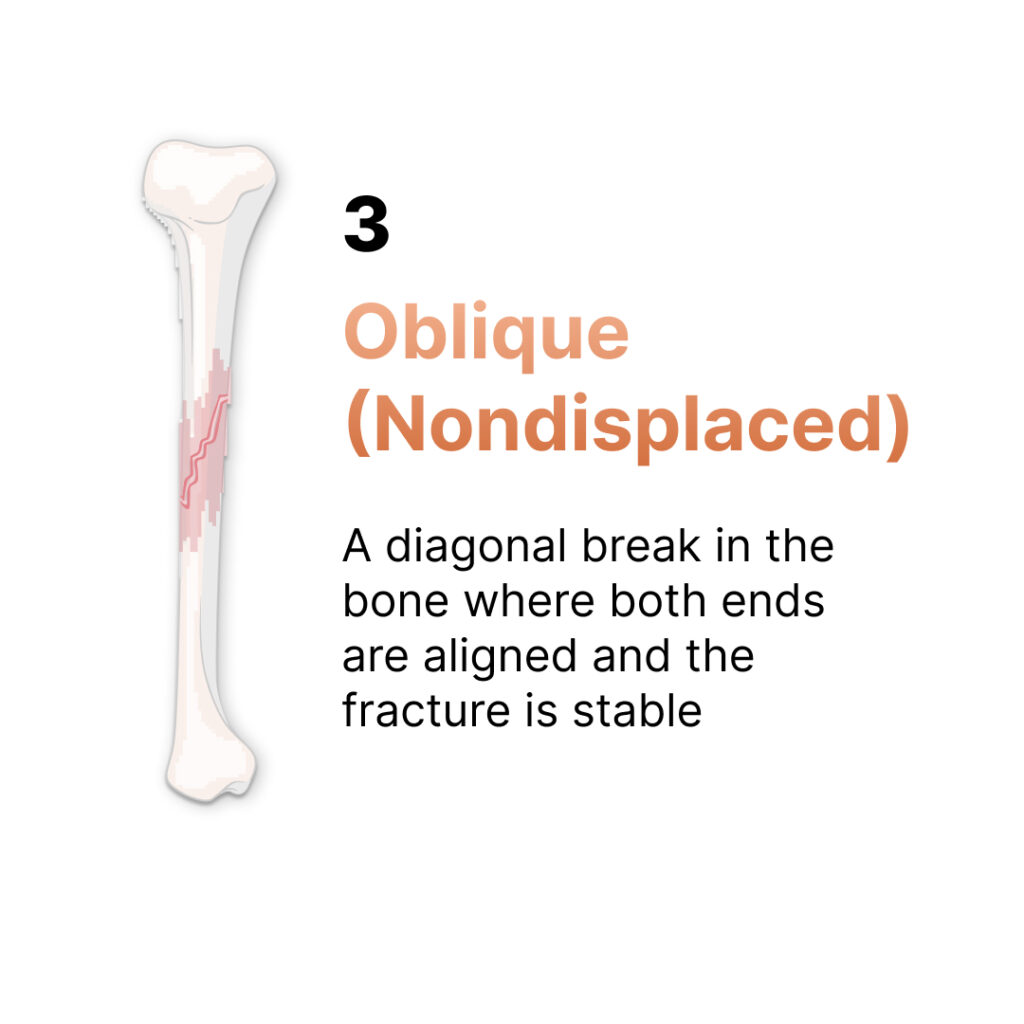
Non-displaced Oblique Bone Fracture
A displaced oblique fracture is a diagonal break in the bone where the ends are NOT aligned. Treatment for a displaced oblique fracture may include casting or traction. Surgery to realign the bone involves stabilizing it with screws, pins, or plates.
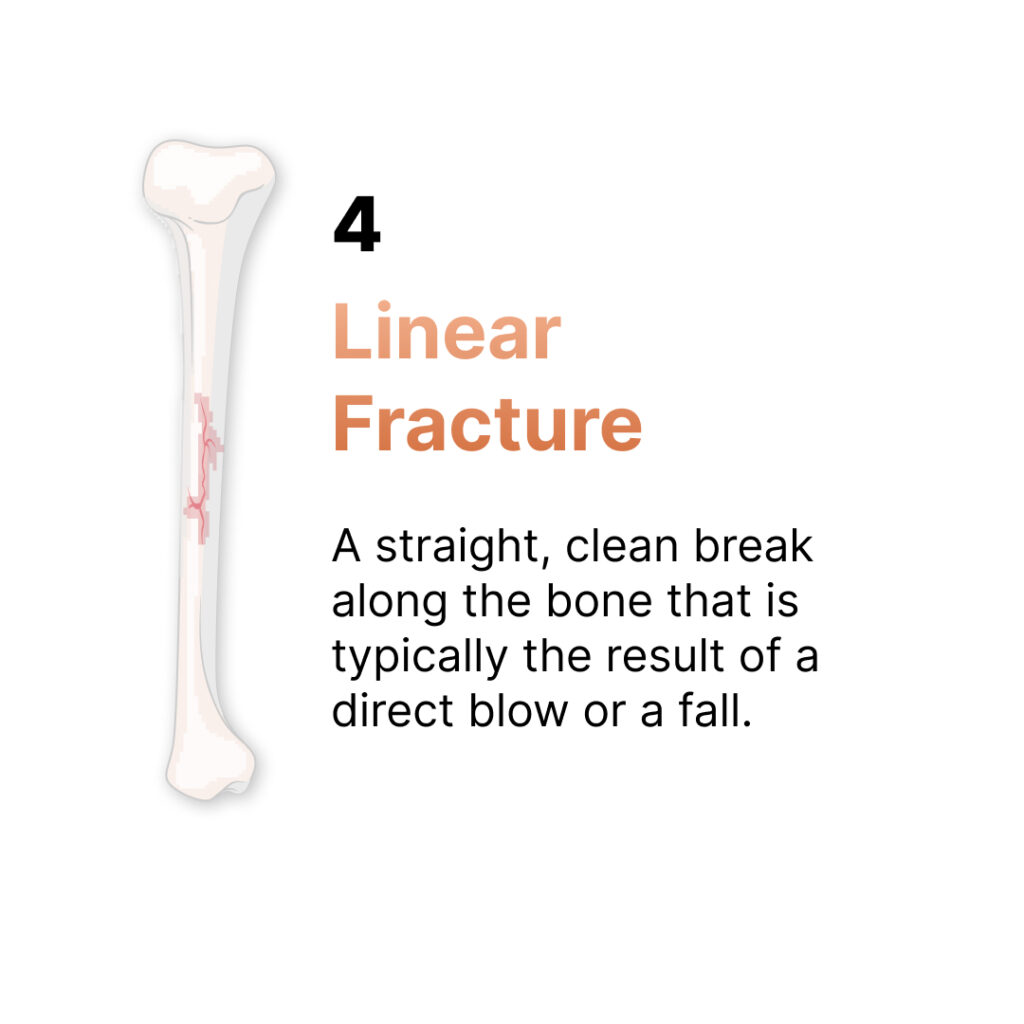
Linear Bone Fracture
A linear fracture is a straight, clean break in the bone that is typically the result of a direct blow or a fall. These fractures are relatively stable and may not require surgical intervention. Treatment for a linear fracture may include immobilization with a splint or cast to allow the bone to heal.
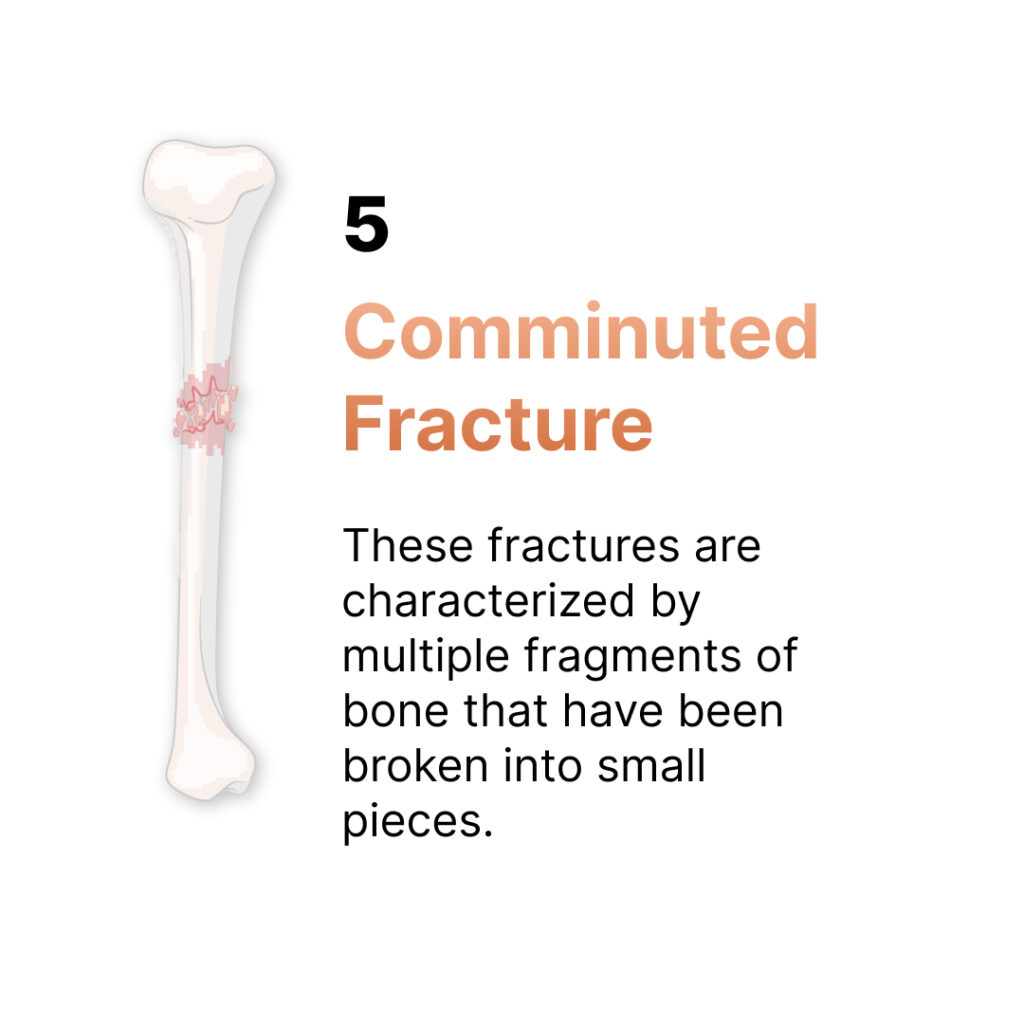
Comminuted Bone Fractures
Comminuted fractures are where the bone has been broken into many fragments/pieces. They are often the result of high-impact injuries, such as car accidents or falls from a height. Treatment may include casting or traction. Surgery may be required to realign the bone and stabilize it with screws, pins, or plates.
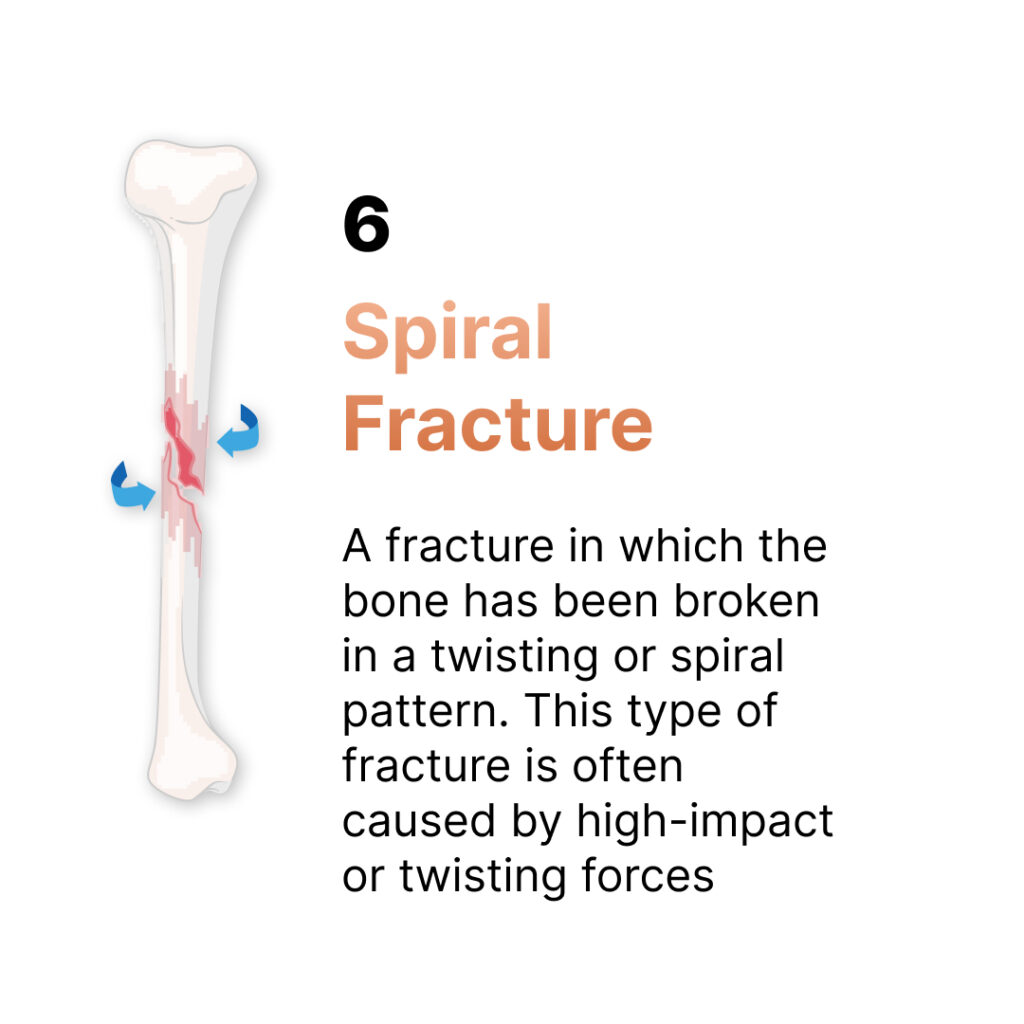
Spiral Bone Fracture
A spiral fracture is a type of fracture in which the bone has been broken in a spiral pattern. This type of fracture is often caused by high-impact or twisting forces, such as sports injuries or car accidents. Spiral fractures can be quite painful and may require a longer recovery time.
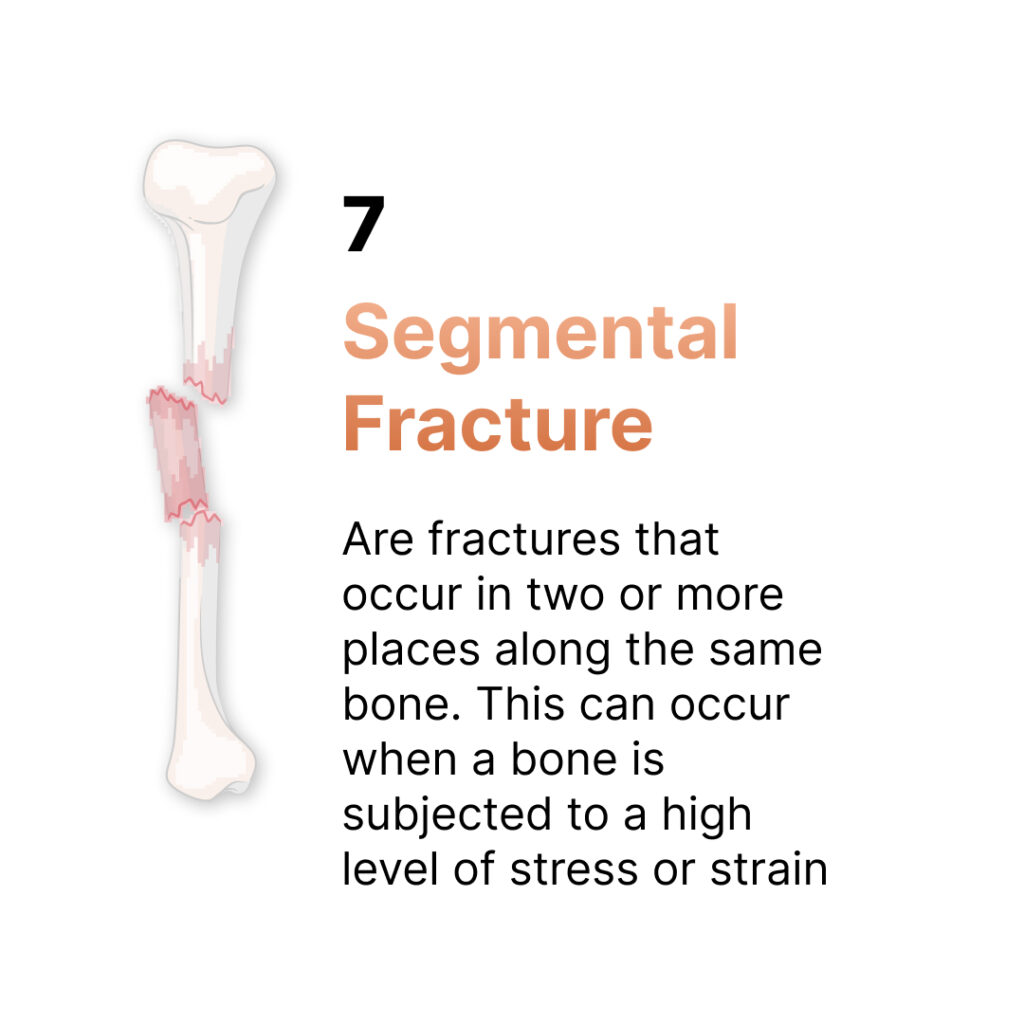
Segmental Bone Fractures
Segmental fractures are fractures that occur in two or more places along the same bone. This occurs when a bone is subjected to high levels of stress or strain, such as a high fall or collision. Segmental fractures may be more complex to treat and require the use of special devices, such as plates or screws, to hold the bone in place.
Treating Fractures
Dr Manjra will comprehensively assess the patient’s injury to arrive at the best therapeutic option to ensure your safe and healthy recovery.
Dr Manjra will also discuss the various options with you and your family to equip you to be part of the decision making process.

